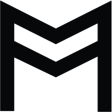Aimee Knight (Writer in Residence at The Mill)
Mayim Bialik is a neuroscientist, but in most circles she’s better known as the former teen star of 1990s sitcom Blossom. Or for her more recent turn on The Big Bang Theory, in which she gets to play a neuroscientist. Anyway, she says it’s sexist to call women ‘girls’ because it’s infantilising. I think about this (and how much I love the Girl Space branding – in that most delectable of shades, ‘millennial pink’) as Laura walks into The Mill.
A self-taught artist and first year nursing student, Laura Gentgall founded Girl Space in 2017. She tells me it’s an art collective for anyone who identifies as female. It’s a place – both figurative and literal – of support, mentorship and freedom of expression for emerging wom*n artists in Adelaide. Tomorrow night, Girl Space launches a new exhibition at The Mill. Today, Laura and I sit in the gallery, opposite a photo series featuring semi-obscured body parts and candy-coloured excretions. It’s pretty neat.
“This, to me, is an important first,” says Laura. She’s “loosely curated” two other Girl Space shows before – one of them on a fortnight’s notice – but they weren’t as tight, nor as big, as this one. “This has been quite heavily curated. It’s really our inaugural exhibition,” she says.
The works on show were created by Antonia Ditroia, Ban-She, Brianna Speight, Ellie Anderson, Indigo Cherry, Nina Haigh and Sascha Tan (with Laura assisting “on the side like, ‘yeah, you can do this’”). There’s photography, collage, marker on paper, oil on canvas, acrylic on calico, and digital prints on show.
“Shall we take a little stroll around the gallery?” I ask.
“I'll turn the lights on,” says Laura.
The halogens arouse and I get a better look at Brianna’s photos. Pastel goo spills from an androgynous mouth. Acrylic talons are blue-, pink- and yellow-tacked to the back of someone’s hand. “It’s quite playful, but it’s also a bit grotesque,” says Laura. “Brianna uses a lot of fabrics and textiles to mask the body. She’s finishing visual arts at UniSA, doing this at the same time as her major works for uni,” Laura says.
We turn the corner to Ban-She’s pieces. “She likes painting girls in their environments [but] she really went outside her comfort zone. She’s used to painting ‘what you see is what you get’ art, but she’s gone a bit surreal.” Teeny-tiny femme figures nestle in messy bedrooms. They look like Where’s Wally? and Polly Pocket’s lovechildren.
“It’s a bit of an adventure, picking out all the little details. I love the hanging plant earrings,” says Laura.
“I like the little kitty,” I say.
“And the eyeballs on the antennae.”
“Little Totoro on the bookshelf.”
“It’s so creepy, but it’s good.” It’s really good.
Next we inspect Ellie’s multiple-exposure photos. The prints are almost a metre tall – the largest works in the show. Their striking black and white stands out from the hypercolour pieces we’ve seen so far. “Her work is all about the layers of communication, layers of her life. They’re quite personal,” says Laura.
She steps me through Sascha’s digital pop art prints, Antonia’s riff on the pin-up girl (ft. her mum, Lisa Simpson and the lady off a pasta box), and Nina’s paintings about her trip to The Top End.
“Are any of the works for sale?” I ask.
“Everything is,” says Laura. I try and fail to maintain a poker face.
“I know,” she laughs. “I've already put my name on one thing.” She points to the first work anointed with a circle sticker. One of Indigo’s candid snaps, it’s “a love letter to her friends,” says Laura. Urchins swing from a Hills Hoist, steeped in anemoia – nostalgia for a time they’ve never known. My guess is ‘1990’ (the year Blossom premiered, incidentally).
I ask how old the artists are. Indigo is twenty, as are Nina and Sascha. Ellie’s twenty-two, Brianna’s twenty-three and Ban-She is twenty-four, Laura explains.
“I feel like an underachiever,” I don’t mean to say out loud but do.
“It sucks when you see people who are younger than you,” says Laura (also twenty) to me (twenty-nine). I mean, it does and it doesn’t. I want to say that but end up asking:
“How are you feeling about opening night?”
“Excited,” says Laura. “A bit nervous, but mostly excited.”
We talk, off topic, about that for an hour or so (even though we both have shitloads of work to do) before parting ways.
Later, I wonder if Laura knows the song, “Tell Laura I Love Her”, a kitschy death rock ballad from 1960. Released during teen culture’s first light, it tells a lavishly tragic tale of true love cut short by a fatal car accident. It was banned by several radio stations, including the BBC, but it piqued the uniquely morbid interests of pubescent girls, and raced to number one. Young women dig life, death, art, artifice, sleepovers and car crashes in equal measure.
If I’ve learned one thing in my nine and score years, it’s that girls are multitudinous (and it feels good to say so). Give them space and they might surprise you, although they really shouldn’t.
. . .
Girl Space ran from September 8 - 22, 2017 in The Mill’s Exhibition Space as part of FRAN FEST. Centred around the visual arts exhibition curated by Laura Gentgall, Girl Space also presented an all-female makers’ market, life drawing class with Jelena Vujnovic and opening and closing night events.
Aimee Knight is one of the inaugural participants in The Mill’s Writer In Residence program. Other works commission day Aimee were published by CityMag (read Peter Fong: Drawing from nature and Botanic Poke with tattoo artist Nadia Suartika). Applications for the second round of the Writer in Residence are now open. Find out more here.









